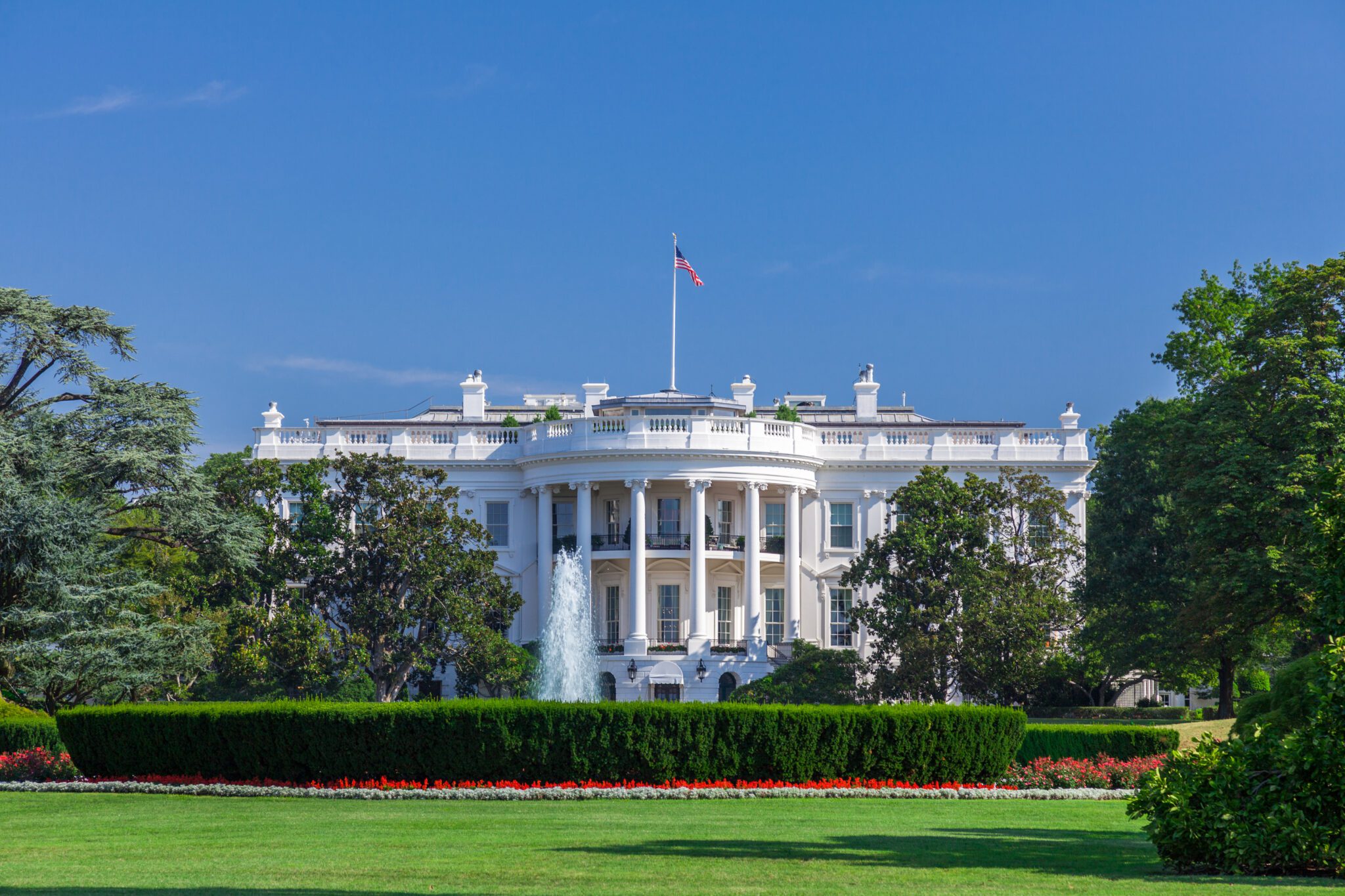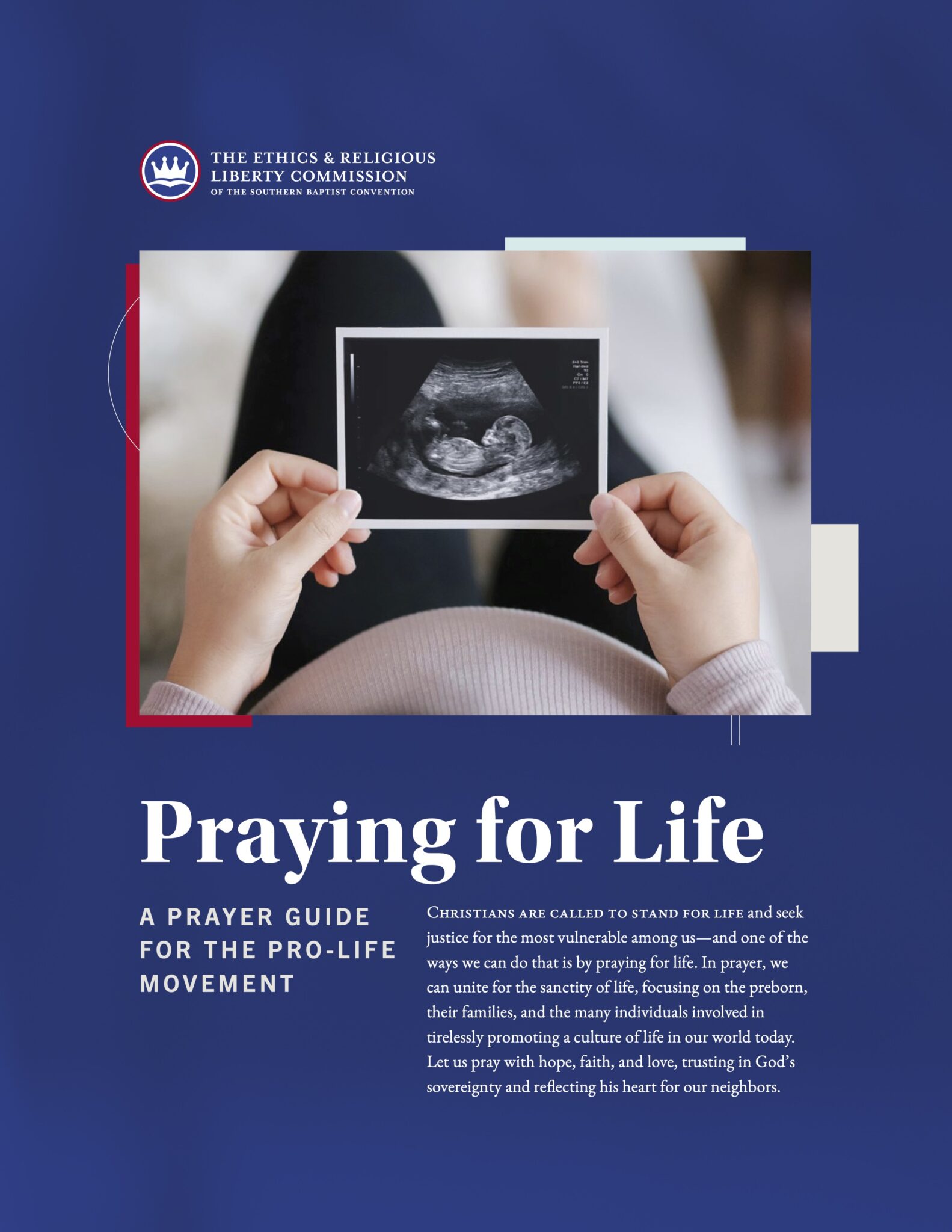In some of his first acts as the 47th president of the United States, Donald J. Trump signed two executive orders: “Defending Women from Gender Ideology Extremism and Restoring Biological Truth to the Federal Government” (Jan. 20, 2025) and “Protecting Children from Chemical and Surgical Mutilation” (Jan. 28, 2025). These presidential actions are unprecedented and decisive, officially opposing the spread of transgender ideology, promoting common sense notions and traditional understandings of men and women, and stopping the maiming of children (defined as individuals under the age of 19) burdened by gender confusion and seeking physical transition from their biological sex to their perceived gender (e.g., a girl to a boy).
These presidential actions are unprecedented and decisive, officially opposing the spread of transgender ideology.
In this essay, I address what these executive orders are and do as well as offer some theological and practical reflections on them.
“Defending Women from Gender Ideology Extremism and Restoring Biological Truth to the Federal Government” (DWGIE)
As for its purpose, DWGIE (Section 1) states,
Across the country, ideologues who deny the biological reality of sex have increasingly used legal and other socially coercive means to permit men to self-identify as women and gain access to intimate single-sex spaces and activities designed for women, from women’s domestic abuse shelters to women’s workplace showers. This is wrong.1To take an extreme example, 15.3% of inmates in women’s prisons are male offenders, putting the female prisoners in harm’s way. Crime Prevention Research Center, “Transgenders in Federal Prison: 15.3% of Prisoners in Women’s Prison are Men, 0.5% of Prisoners in Men’s Prison are Women” (Jan. 28, 2025), https://crimeresearch.org.
At the heart of this gender ideology extremism stands a rejection of “the ordinary and longstanding use and understanding of biological and scientific terms, replacing the immutable biological reality of sex with an internal, fluid, and subjective sense of self unmoored from biological facts.” Put simply, this radical ideology depends on the separation of sex from gender. The former term refers to one’s “immutable” biological sex (“biological facts” such as XX or XY chromosomes, female or male genitalia, and the production of ova or sperm) or, as the saying goes, “one’s sex as assigned at birth.”2Sex is not assigned at birth, though that is a common notion today and opens the door to gender ideology extremism. Rather, sex is determined at conception through the presence of a sex-determining factor: the SRY gene (for males) or the absence of the SRY gene (for females). Typically, when turned on, this gene initiates sexual development toward the production of male gametes/sperm; when the SRY gene is not present, the gonads of the developing fetus become ovaries that will result in the production of female gametes/ova. While this is true in the vast majority of cases, some genetic conditions can affect the development of secondary sex characteristics. Full humanity and identity as image-bearers must be affirmed for all people, regardless of any potential genetic abnormalities that are present in a fallen world, but these instances do not affect the reality of the male/female binary which is rooted in biological truth. For further discussion see Abigail Favale, The Genesis of Gender: A Christian Theory (San Francisco: Ignatius Press, 2022), and Leonard Sax, “How Common Is Intersex? A Response to Anne Fausto-Sterling” in The Journal of Sex Research, vol. 39, no. 3 (August 2002), 174-78. The latter term refers to one’s “internal” perception of or “subjective” feeling about one’s gender identity and/or gender expression. For example, a man believes that he is actually a woman, or a woman shapes her appearance to be like a man and engages in male-typical behavior.3 This division between sex and gender has roots in Gnosticism, radical (Cartesian) substance dualism, neo-Gnosticism, expressive individualism, and influential writings such as Judith Butler’s Gender Trouble: Feminism and the Subversion of Identity (New York: Routledge, 1990).
To officially challenge this gender ideology extremism, DWGIE (Section 2) declares, “It is the policy of the United States to recognize two sexes, male and female. These sexes are not changeable and are grounded in fundamental and incontrovertible reality.” In one sense, this declaration is unremarkable; for most of world history and throughout most of the contemporary world, a fundamental given is that humankind is of (only) two types: male and female. Given gender ideology’s current vice-grip on American society, this presidential policy is necessary to stem and reverse the tide.
DWGIE provides several common sense and traditional definitions of key words in this controversy (with my accompanying commentary on them):
(a) “Sex” shall refer to an individual’s immutable biological classification as either male or female. “Sex” is not a synonym for and does not include the concept of “gender identity.”
(Such a declaration means that a man is a sexed male whether or not he considers his gender to be female. Accordingly, the sex of Bruce Jenner, the 1976 Olympic decathlon champion, is male even though in 2015 he claimed as Caitlyn Jenner that his gender is female.4 Buzz Bissinger, “Caitlyn Jenner: The Full Story,” Vanity Fair (July 25, 2015), Caitlyn Jenner on the Cover of Vanity Fair | Vanity Fair.)
(b) “Women” or “woman” and “girls” or “girl” shall mean adult and juvenile human females, respectively.
(c) “Men” or “man” and “boys” or “boy” shall mean adult and juvenile human males, respectively.
(d) “Female” means a person belonging, at conception, to the sex that produces the large reproductive cell.
(In other words, a woman is a person who is biologically characterized by her production of eggs [ova], enabling her to be impregnated by a man and thus become a mother. This reproductive capacity is true for all women, both married and single, even if this potentiality is not actualized.5A special case is that of a woman who is sterile, that is, whose reproductive capacity does not function. It is beyond the scope of this article to address this situation in detail, but her lack of reproductive potential does not alter her sex, as she is a woman for factors other than that of the absence of ovulation. One principal factor is that her chromosomes are XX, meaning that genetically she is a woman. For further discussion see J. Budziszewski, What We Can’t Not Know: A Guide (Wilmington, DE: Ignatius Press, 2011); and J. Budziszewski, “The Meaning of Sexual Differences,” and Paul C. Vitz, “Men and Women: Their Differences and Their Complementarity; Evidence from Psychology and Neuroscience,” in The Complementarity of Women and Men: Philosophy, Theology,Psychology, and Art, ed. Paul C. Vitz (Washington, D.C.: Catholic University of America Press, 2021), 9-34, 182-215.)
(e) “Male” means a person belonging, at conception, to the sex that produces the small reproductive cell [sperm].
(That is, a man is a person who is biologically characterized by his production of sperm, enabling him to impregnate a woman and thus become a father. This reproductive capacity is true for all men, both married and single, even if this potentiality is not actualized.6A special case is that of a man who is sterile, that is, whose reproductive capacity does not function. It is beyond the scope of this article to address this situation in detail, but his lack of reproductive potential does not alter his sex, as he is a man for factors other than that of the absence of sperm in his semen. One principal factor is that his chromosomes are XY, meaning that genetically he is a man. For further discussion see the above listed resources.)
DWGIE (Section 2) continues with a detailed discussion of two key expressions in our contemporary American society:
(f) “Gender ideology” replaces the biological category of sex with an ever-shifting concept of self-assessed gender identity, permitting the false claim that males can identify as and thus become women and vice versa, and requiring all institutions of society to regard this false claim as true. Gender ideology includes the idea that there is a vast spectrum of genders that are disconnected from one’s sex. Gender ideology is internally inconsistent, in that it diminishes sex as an identifiable or useful category but nevertheless maintains that it is possible for a person to be born in the wrong sexed body.
(g) “Gender identity” reflects a fully internal and subjective sense of self, disconnected from biological reality and sex and existing on an infinite continuum, that does not provide a meaningful basis for identification and cannot be recognized as a replacement for sex.
As for the vast spectrum disconnecting gender from sex, a prevalent example (since Feb. 2014) is Facebook’s 50-plus options for members to identify as their gender. These choices include agender, androgyne, bigender, gender fluid, neither, non-binary, pangender, transman, transwoman, and two spirit.7News articles about Facebook’s gender options began to appear in February 2024; for example, ABC News, “Here’s a List of 58 Gender Options for Facebook Users,” ABC News, accessed February 6, 2025, http://abcnews.go.com/blogs/headlines/2014/02/heres-a-list-of-58-gender-options-for-facebook-users. An example of a pangender celebrity is Miley Cyrus; in her case, she uses the term “pansexual” to indicate that she can be sexually involved with both men and women and that her gender is unassigned. ABC News, “Miley Cyrus Opens Up About Identifying as Pansexual” (October 11, 2016), https://abcnews.go.com/Entertainment/miley-cyrus-opens-identifying-pansexual/story?id=42734994#:~:text=My%20first%20relationship%20in%20my,identify%20as%20male%20or%20female.
The inconsistency of this gender ideology is underscored by Helen Joyce: “The central doctrine of gender-identity ideology—that your gender identity is what you say it is—necessarily precludes any objective delineation.”8Helen Joyce, Trans: Gender Identity and the New Battle for Women’s Rights (London: Oneworld, 2021), 136. An example is the self-referential circularity of the word “gender” as expressed in the University of Oregon’s definition of “gender identity”: “a person’s sense of their own gender.” This definition is one entry in the University’s “Trans Glossary;” perplexedly, there is no entry for “gender,” but there are definitions for “agender,” “cisgender,” “gender expression,” “gender role,” “gender queer,” and “transgender.”9University of Oregon Human Resources, “Trans Glossary 101,” accessed Jan. 31, 2025, https://hr.uoregon.edu/trans-glossary-101. For further discussion see Abigail Favale, The Genesis of Gender: A Christian Theory (San Francisco: Ignatius Press, 2022), 152. As Ryan Welsh questions, “How can any of these definitions, which include the word ‘gender,’ be understood in any rational way if the term ‘gender’ is never defined? The term ‘gender’ has become a word empty of meaning. Appending an adjective to an undefined word renders the term/phrase vacuous; it means everything and, therefore, nothing.”10Ryan Charles Glen Welsh, “How Should We Then Respond? A Christian Philosophical and Theological Response to Transgender Ideology” (Ph.D. dissertation, The Southern Baptist Theological Seminary, 2023), 101. To illustrate the point, what do the descriptive expressions “blue blik,” “greasy blik,” “upside-down blik,” “third blik,” and “retired blik” mean if one does not know what “blik” is?
As practical applications of its policy, DWGIE (Section 3) directs federal agencies to begin to use the “sex-based definitions” noted above, enforce laws “to protect men and women as biologically distinct sexes,” terminate the term “gender” and use only the term “sex,” and ensure that all official United States documents (for example, passports, visas, and Global Entry cards) “accurately reflect the holder’s sex.”
To summarize, the executive order “Defending Women from Gender Ideology Extremism and Restoring Biological Truth to the Federal Government” (Jan. 20, 2025) is a decisive move to officially reverse the spread of transgender ideology and promote common sense notions and traditional understandings of men and women. It dovetails well with the second executive order (Jan. 28, 2025).
The executive order “Defending Women from Gender Ideology Extremism and Restoring Biological Truth to the Federal Government” (Jan. 20, 2025) is a decisive move to officially reverse the spread of transgender ideology and promote common sense notions and traditional understandings of men and women.
“Protecting Children from Chemical and Surgical Mutilation” (PCCSM)
As for its purpose, PCCSM (Section 1) states,
Across the country today, medical professionals are maiming and sterilizing a growing number of impressionable children under the radical and false claim that adults can change a child’s sex through a series of irreversible medical interventions. This dangerous trend will be a stain on our Nation’s history, and it must end.
The section rehearses a tragic outcome of such interventions:
Countless children soon regret that they have been mutilated and begin to grasp the horrifying tragedy that they will never be able to conceive children of their own or nurture their children through breastfeeding. Moreover, these vulnerable youths’ medical bills may rise throughout their lifetimes, as they are often trapped with lifelong medical complications, a losing war with their own bodies, and, tragically, sterilization.
At the root of this radical “solution” is the contemporary phenomenon of gender dysphoria, which “refers to intense psychological distress or impairment in functioning attributed to the feelings of incongruence between one’s gender identity and sex assigned at birth.”11 American Psychiatric Association. The Diagnostic and Statistical Manual of Mental Disorders (5th ed DSM-5). Arlington, VA: American Psychiatric Association; 2013. Section II: Diagnostic Criteria and Codes, “Gender Dysphoria.” Often, such incongruence is seen among teenage girls who are socially awkward, outliers in their schools, anxious and/or depressed, and starving for acceptance and relationships. Once they come out as transgender, they experience much adulation (especially on social media), encouragement, and recognition.12This description is not intended to minimize or dismiss the existential pain and distress experienced by gender-confused adolescents.
Though statistics show that a high percentage of adolescents emerge out of their gender confusion as they move toward adulthood (98% of these boys and 88% of these girls accept their biological sex after puberty),13 American Psychiatric Association. The Diagnostic and Statistical Manual of Mental Disorders (5th ed DSM-5). Arlington, VA: American Psychiatric Association; 2013. Section II: Diagnostic Criteria and Codes, “Gender Dysphoria.” some adopt extreme measures to solve their gender incongruence. PCCSM (Section 2) briefly explains these interventions, highlighting three elements:
The phrase “chemical and surgical mutilation” means [1] the use of puberty blockers, including GnRH agonists [gonadotropin-releasing hormones, used primarily to treat infertility, endometriosis, prostate cancer, and fibroids] and other interventions, to delay the onset or progression of normally timed puberty in an individual who does not identify as his or her sex; [2] the use of sex hormones, such as androgen blockers, estrogen, progesterone, or testosterone, to align an individual’s physical appearance with an identity that differs from his or her sex; and [3] surgical procedures that attempt to transform an individual’s physical appearance to align with an identity that differs from his or her sex or that attempt to alter or remove an individual’s sexual organs to minimize or destroy their natural biological functions. This phrase sometimes is referred to as “gender affirming care.”14The bracketed numbers are my additions to the executive order. I offer more details on the nature of the extreme measures of “chemical and surgical” mutilation:
– puberty blockers: Children and adolescents who experience gender dysphoria elect to suppress puberty temporarily through pubertal blockers (gonadotropin-releasing hormone [GnRH] drugs). These blockers suppress the body’s release of sex hormones such as testosterone and estrogen during puberty. In boys, these drugs decrease the growth of facial and body hair, prevent the deepening of their voice, suppress the growth of their penis, scrotum, and testicles and interfere with erections. In girls, these drugs limit or stop the development of their breasts and prevent the onset of menstruation.
–chest binding: Girls/women who experience gender dysphoria may bind their chests to flatten and minimize the appearance of their breasts, making them look less like girls/women.
–gender-affirming hormone therapy: Both feminizing hormone therapy and masculinizing hormone therapy produce physical changes to secondary sex characteristics in the body so as to align the body with a person’s gender identity. Feminizing hormone therapy is applied to boys/men who transition to become transgender girls/women. This therapy involves taking medicine that blocks the action of testosterone and taking estrogen that lowers the body’s production of testosterone and triggers the development of feminine secondary sex characteristics. Examples of such change include fewer erections, the development of breasts, smaller testicles, less muscle mass and strength, and less facial and body hair. Masculinizing hormone therapy is applied to girls/women who transition to become transgender boys/men. This therapy involves taking the male hormone testosterone, which stops the menstrual cycle, lowers the ovaries’ ability to produce estrogen, deepens one’s voice, increases facial and body hair, and increases muscle mass and strength.
–sex reassignment surgery/gender affirmation or confirmation surgery: Feminizing surgery is applied to boys/men who transition to become transgender girls/women and may include reduction of the Adam’s apple, insertion of breast implants, removal of the penis and scrotum, and construction of a vagina and labia. Masculinizing hormone therapy is applied to girls/women who transition to become transgender boys/men and may include breast reduction or mastectomy, removal of the ovaries and uterus, and construction of a penis and scrotum.
This discussion curates articles from both Mayo Clinic and Cleveland Clinic:E. Coleman et al., “Standards of Care for the Health of Transgender and Gender Diverse People, Version 8,” International Journal of Transgender Health 23, no. sup1 (August 19, 2022): S1–259, https://doi.org/10.1080/26895269.2022.2100644. ; “Puberty Blockers for Transgender and Gender-Diverse Youth,” Mayo Clinic, accessed February 6, 2025, https://www.mayoclinic.org/diseases-conditions/gender-dysphoria/in-depth/pubertal-blockers/art-20459075. ; “Gender Affirmation Surgery: What Happens, Benefits & Recovery,” accessed February 6, 2025, https://my.clevelandclinic.org/health/procedures/gender-affirmation-surgery.
With all these measures, the hope is to make one’s body conform more to one’s gender identity; that is, for boys and men to appear more feminine and for girls and women to appear more masculine. They are radical solutions to gender incongruence and result in the mutilation of children and adolescents. Dangers include tissue necrosis (damaged or dead body tissue), thrombosis or pulmonary embolism, fistula (an irregular connection between, for example, the bladder or bowel into the vagina), incontinence, loss of sexual function, sterility, and worsening of a behavioral health problem.
To put an end to this mutilation of children, at least officially, PCCSM (Section 1) declares, “it is the policy of the United States that it will not fund, sponsor, promote, assist, or support the so-called ‘transition’ of a child from one sex to another, and it will rigorously enforce all laws that prohibit or limit these destructive and life-altering procedures.”
This executive order places blame for this evil practice on the pseudo-science of the World Professional Association for Transgender Health (WPATH). To offset this organization’s influence in the United States, PCCSM (Section 3) directs the appropriate government agencies to research and provide scientifically grounded “practices for improving the health of minors with gender dysphoria, rapid-onset gender dysphoria, or other identity-based confusion, or who otherwise seek chemical or surgical mutilation.”15Important research in this area already exists and could serve as a template for U.S. governmental agencies to conduct their studies. “The Cass Review – Independent Review of Gender Identity Services for Children and Young People: Interim Report,” n.d. is a 388-page summary of extensive research on gender-affirming care and concluded (this list is not exhaustive; British spellings have been changed to American English):
-The disconcerting increase in adolescent gender dysphoria “is a result of a complex interplay between biological, psychological and social factors.” As this interplay varies for each individual, “no single guideline” of treatment can be prescribed in all cases. It further instructs institutions that receive Federal grants for research or education, as well as programs such as Medicare, Medicaid, the Patient Protection and Affordable Care Act, and the Department of Defense’s TRICARE, to “end the chemical and surgical mutilation of children.”
-“While a considerable amount of research has been published in this field, systematic evidence reviews demonstrated the poor quality of the published studies, meaning there is not a reliable evidence base upon which to make clinical decisions, or for children and their families to make informed choices.” The poor quality of research, its misrepresentation “both in scientific publications and social debate,” and pressure from competing ideologies detracts from what is most important: individualized care and treatment for adolescents struggling with gender incongruence.
-The rationale for early puberty suppression remains unclear, with weak evidence regarding the impact on gender dysphoria, mental or psychosocial health. The effect on cognitive and psychosexual development remains unknown.
-The use of masculinizing/feminizing hormones in those under the age of 18 also presents many unknowns, despite their longstanding use in the adult transgender population. The lack of long-term follow-up data on those commencing treatment at an earlier age means we have inadequate information about the range of outcomes for this group.
-Clinicians are unable to determine with any certainty which children and young people will go on to have an enduring trans identity.
-For the majority of young people, a medical pathway may not be the best way to manage their gender-related distress. For those young people for whom a medical pathway is clinically indicated, it is not enough to provide this without also addressing wider mental health and/or psychosocially challenging problems.
Two Canadian studies draw similar conclusions to the Cass Report: Anna Miroshnychenko, “Puberty blockers for youth experiencing gender dysphoria: A systematic review and meta-analysis,” Archives of Disease in Childhood adc3279091.pdf, and Anna Miroshnychenko, “Gender-affirming hormone therapy for individuals with gender dysphoria below 26 years of age: A systematic review and meta-analysis,” Archives of Disease in Childhood adc327921.pdf.
Other entities dispute such studies and advocate for the continuation of gender-affirming care; see for example Stephanie L. Budge, Roberto L. Abreu, et. al., “Gender Affirming Care is Evidence Based for Transgender and Gender-Diverse Youth,” Journal of Adolescent Health, Vol. 75, Issue 6 (December 2024), Gender Affirming Care Is Evidence Based for Transgender and Gender-Diverse Youth – Journal of Adolescent Health
While President Trump’s executive orders appear unprecedented, they are not in their sentiment. At the SBC annual meeting in June 2023, Southern Baptists affirmed a resolution “On Opposing ‘Gender Transitions,” appealing to both Scripture and the Baptist Faith and Message (Article III) in condemning “gender-affirming care” and “gender transition” intervention.16 “On Opposing ‘Gender Transitions,’” https://www.sbc.net/resource-library/resolutions/on-opposing-gender-transitions/ More recently, the ERLC was a clear voice on this issue, urging the incoming president to take decisive steps to reverse Biden administration policies:17 ERLC policy staff, “5 Priorities for President Trump’s First 100 Days” (November 12, 2024), https://erlc.com/policy-content/5-policy-priorities-for-president-trumps-first-100-days/
- The ERLC asked the Trump administration to undo a harmful executive order, “Preventing and Combating Discrimination on the Basis of Gender Identity or Sexual Orientation,” signed by President Biden.18 Executive Order 13988—Preventing and Combating Discrimination on the Basis of Gender Identity or Sexual Orientation | The American Presidency Project (Jan. 20, 2021). This executive order directed each federal agency to develop new policies that promote “gender transitions” and violate religious liberty to support unbiblical views of gender and sexuality.
- The ERLC asked the Trump administration to undo several federal rules finalized by the Biden administration to uphold religious liberty, empower parents, and shield children from dangerous gender ideology, starting by:
- revoking rules that require coverage of transgender surgeries and procedures;19 https://erlc.com/wp-content/uploads/2022/10/ERLC-Section-1557-ACA.pdf (October 3,2022)
- undoing rules that redefine Title IX to include sexual orientation and gender identity;20https://erlc.com/wp-content/uploads/2023/05/5.12.23-Nondiscrimination-in-Educational-Sports-Proposed-Rule-Comment-Letter.pdf (May 15, 2023) and
- repealing rules that prohibit parents with biblical beliefs on gender and sexuality from fostering children in need.21https://erlc.com/wp-content/uploads/2023/11/Public-Comments-HHS-Safe-and-Appropriate-Foster-Care-Placement-Requirements-for-Titles-IV-E-and-IV-B.pdf (November 22, 2023)
Theological and Practical Reflections
A theology of human embodiment stands against the extremism of gender ideology and provides a theological foundation from which to address the fact of only two genders (and to reject the idea of many genders). It further attends to the suffering due to gender dysphoria, transgenderism, and the extreme measures being employed today to (incorrectly and harmfully) rectify such suffering.22Gregg R. Allison, Embodied: Living as Whole People in a Fractured World (Grand Rapids: Baker, 2021), especially chapters 1 and 2. Much of the following discussion is taken from Embodied.
This theology is grounded on the Bible’s rehearsal of the creation of human beings in Genesis 1:26-28. First, the triune God deliberated concerning the creation of humankind as his image bearers who would rule over the created order (v. 26). Second, God actualized his purpose: he created humankind in his divine image such that there were male-gendered image bearers and female-gendered image bearers (v. 27). Finally, God gave the cultural mandate, a charter he established with humankind to build society for human flourishing (v. 28). Importantly for this discussion, for human beings to carry out their divinely designed purpose, they are and must be embodied image bearers. Embodiment is the proper state of human existence. In this earthly life, if we are not embodied, we do not—even more, we cannot—exist, nor can we fulfill the charter that God has established with us, his image bearers. God has created us to be embodied people, so we embrace our created embodiment.
Furthermore, because sex (maleness or femaleness) maps on to embodiment, it is an essential given of human existence. God’s design for his human creatures is that we are male-gendered embodied image bearers or female-gendered embodied image bearers. Put simply, we are gendered all the way down.
God’s design for his human creatures is that we are male-gendered embodied image bearers or female-gendered embodied image bearers. Put simply, we are gendered all the way down.
This theology of created and sexed embodiment (1) contradicts gender ideology extremism that denies “the immutable biological reality of sex” and seeks to replace this unchangeable reality “with an internal, fluid, and subjective sense of self unmoored from biological facts;” (2) underscores the reality of only two sexes—male and female—and negates the notion of 50-plus genders; and (3) offers hope to adolescents struggling with their sense of sex by pointing them to the One who created them as they are—male or female—and who will provide concrete help through his Word, the Holy Spirit, sympathetic and compassionate family members, leaders, and friends. As Christians and churches who come alongside to assist these struggling image bearers, we need to be ready to care for and support them in both the short- and long-term as they wrestle with their identity. Having a firm theological foundation does not necessarily make conversations and care easier, but it does provide us with a starting point for such engagement. As the above SBC resolution urged, we are to “extend the love of Christ, who can save anyone who would call on his name, as well as compassionate care and tender mercy to those experiencing identity or body-related distress and/or are currently undergoing or have undergone ‘gender transition’ interventions.”23“On Opposing ‘Gender Transitions’ – SBC.Net,” https://www.sbc.net/, accessed February 6, 2025, https://www.sbc.net/resource-library/resolutions/on-opposing-gender-transitions/.
We are to “extend the love of Christ, who can save anyone who would call on his name, as well as compassionate care and tender mercy to those experiencing identity or body-related distress and/or are currently undergoing or have undergone ‘gender transition’ interventions.”
Some may question how executive orders issued by the president of the United States can have any impact on these issues; indeed, some would insist that they are worthless at best and damaging at worst. However, I believe they can help. A recent British study published in The Archives of Disease in Childhood reported “there was a 50-fold increase in recorded prevalence of gender dysphoria among patients 18 or younger in primary care settings in England between 2011 and 2021.”24Kristine Parks, “Therapists sound alarm after study shows dramatic rise in gender dysphoria among children,” Fox News (January 28, 2025), https://www.foxnews.com/media/therapists-sound-alarm-after-study-shows-dramatic-rise-gender-dysphoria-among-children; Jo Taylor, Ruth Hall, et. al., “Characteristics of children and adolescents referred to specialist gender services: a systematic review,” The Archives of Disease in Childhood (April 9, 2024). https://adc.bmj.com/content/archdischild/109/Suppl_2/s3.full.pdf Though the scientists did not study the causes for the disconcerting uptick in adolescent gender incongruence, they proposed that social and cultural factors—“a greater acceptance and awareness of gender differences, increased social media use, and increased rates of poor mental health”—may have contributed to the rising rate.25Kristine Parks, “Therapists Sound Alarm after Study Shows Dramatic Rise in Gender Dysphoria among Children | Fox News,” accessed February 10, 2025, https://www.foxnews.com/media/therapists-sound-alarm-after-study-shows-dramatic-rise-gender-dysphoria-among-children. The study did suggest that the presence of eating disorders, suicide and/or self-harm, depression and/or anxiety, autism spectrum disorder, adverse childhood experiences (e.g., emotional and/or sexual abuse), and attention deficit hyperactivity disorder may be higher in adolescents who are referred to gender services than in the general population.26Taylor et. al., The Archives of Disease in Childhood, 7-8.
Assuming a similar alarming trend among adolescents in the United States, and assuming some contribution of social and cultural influences to this trend, I propose that these two executive orders may help to reduce such influences. If American society, prompted by these directives, begins to reverse the spread of transgender ideology, affirms the existence of only two sexes, and halts the mutilation of adolescents, then new cultural and social factors will begin to influence these vulnerable youths positively. As gender fluidity is no longer promoted in the mainstream as normative, adolescents may once again recognize their sex as natural and immutable. Additionally, young people who are currently reluctant to talk with their peers about these issues because it is not socially and culturally acceptable to do so, may take heart and speak up. Furthermore, vulnerable girls and young women, especially, will be better protected as sports, dressing rooms, bathrooms, and other spaces are enforced as sex-specific. Such appeal to governmental directives is certainly not ultimate—that foundation belongs to God, Scripture, and a robust theology of created and sexed embodiment. However, it may serve an auxiliary purpose to stem the tide of gender ideology and adolescent mutilation, which is exactly what these two executive orders are intended to do.













